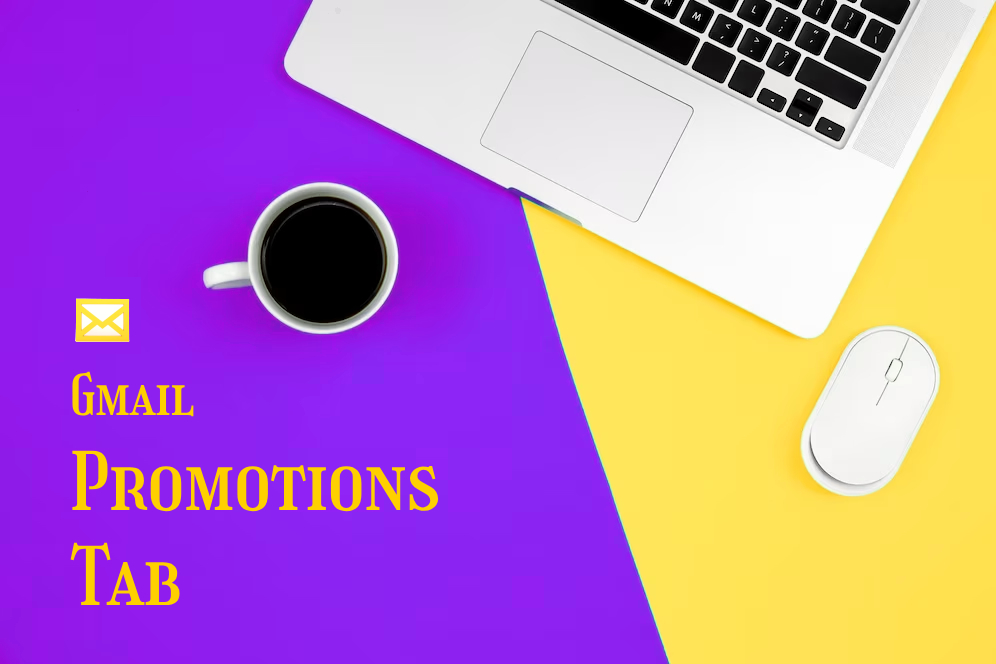
Oh, the wonderful digital age where the clatter of the inbox lid has been replaced by the soft ping sound of incoming emails (if you have it set up that way, we don’t)… As email users, especially those using Gmail, you might have noticed that not all emails land in the primary inbox. Some, quite mysteriously, meander into what is known as the ‘Promotions tab’. But what, pray tell, is this tab? And is its existence a catastrophe, as email marketers label it in a bittersweet manner? Let’s delve deeper into the nuances of this inescapable topic.
What is the Gmail Promotions Tab?
The Gmail Promotions tab is one of Gmail’s default category tabs, sitting comfortably alongside ‘Primary’ and ‘Social’. Introduced to enhance user experience, this tab cleverly segregates promotional emails from the day-to-day personal and professional ones. Think of it as Gmail’s courteous butler, ensuring that marketing offers, discounts, newsletters, and other promotional content don’t mix with your personal letters, ensuring a clutter-free inbox experience.
For email marketers, the Promotions tab is a double-edged sword. On one hand, it ensures that promotional emails don’t get lost amidst other important emails and vice versa, giving both email types their rightful spotlight. On the other, it can sometimes limit visibility, as not all Gmail users frequently check the promotions section. Seems hopeless… Or is it?
The Backlash from Marketers and Results of the Change
When Gmail first introduced the category tabs in 2013, it heralded a significant shift in email management. Google’s primary motive, as expressed in its announcement, was to refine the user experience. To say email marketers had reservations would be an understatement. The primary concerns were visibility, engagement, and deliverability. Marketers felt that while Gmail had painted a rosy picture of the upgraded organization, they essentially buried the marketers’ hard work, pushing carefully created marketing emails to a corner of the inbox that most users would likely ignore.

Truthfully so, in the immediate aftermath, there was a slight decline in open rates for marketing emails. According to a study, open rates dropped from an average of 13% to about 12% in the months immediately after the introduction. Engagement metrics showcased a dip during the initial phase, but interestingly, as users became more accustomed to the tabs, they began checking the Promotions tab with intent. This meant that while the volume of opens decreased, the quality of engagement potentially increased because users checking the Promotions tab were actively seeking promotional content.
However, as the dust settled, marketers realized that while there were challenges, there were also opportunities. The Promotions tab ensured that when users clicked on it, they were in a shopping mindset, leading to potentially higher-quality interactions. A further study from ReturnPath revealed that consumers continued to read marketing emails at roughly the same levels as before. Moreover, the tabs helped enhance deliverability, increased open rates, and reduced spam complaints.
Spotlight on Real-Life Illustrations
As practice is the best teacher, it’s always good to give examples from real life. Let’s think about our everyday life for a moment. When we are in a good mood and feel like buying needed supplies or maybe even indulging in a little shopping therapy, we visit a mall, take our time, and buy what we want. However, if we don’t feel like consumers these days, and private life or work neither motivates nor allows us to go to the shopping center, then a forced visit there has a negative effect on us. In the end, our mood is even worse.
While not as pronounced, it’s still crucial to consider the impact of encountering digital offers in the wrong place and at the wrong time. Do you want consumers to associate your brand with a negative experience? Do you want to spoil the mood of potential customers? Well, there is a point behind these provocative (and perhaps a little dramatic) questions.
The primary mailbox holds the most urgent and important messages for people. These include email exchanges with family and friends, invoices and documents, important notifications related to reservations and other activities, etc. No matter how skillfully your marketing letters are personalized (and in any case – we strongly recommend doing so), they will never reach the same level of personal importance as the emails mentioned earlier.
To illustrate this, let’s briefly go back to everyday life. Imagine you are at home, looking for an important document in your mailbox. However, thanks to the last few busy weeks, your mailbox is overflowing with unread letters in bold. You feel frustrated and don’t even want to search for that document anymore, as the amount of visual noise is too large. Instead of reading all those marketing letters, you feel like throwing them all in the trash.

This is what many people’s inboxes would look like if there were no Gmail Promotions tab. The situation would be even worse during seasonal sales, holidays, Black Friday, or other commercial peak times. Luckily, Gmail came up with the Promotions tab to solve this problem. At the same time, we, as marketers, have a question: besides helping people, is this system also useful for companies?
Why the Promotions Tab is Better Than You Think
Of course, the promotions tab can also experience email overload, and people may find themselves avoiding it because of this. However, if offers become too burdensome, people will avoid them regardless of which tab they are in. So it’s good that when a person finally gets in the mood to engage with promotional material and sees the need to clean up their tab – they leave those mailing lists whose content they are no longer interested in.
Usually, newsletters and offers are those to which people have given their permission. By sharing their email, they have permitted you to send them your messages, and we all know that organic mailing lists are the most effective when it comes to email marketing. If your company’s mailing list turns out to be what people permanently unsubscribe from, this would also be positive, as we want to communicate only with truly interested parties to see real results and speak to the right target group. When we are sending messages to our subscribers, we must put the interests and comfort of our customers first. No matter how good our offer is or how quickly we have to increase our turnover.
People click on promotions when they want to explore the world of offers. If they have this desire, they are more likely to open marketing emails and take desired actions or make purchases. They’re on a shopping spree. What’s even better is that if they are loyal followers of your brand, they have the power to make your company’s emails appear in the primary tab instead. This is one of the most rewarding benefits of the tab system for marketers, as it helps your messages stand out and sets them apart from other senders.

Still Want to Avoid the Promotions Tab? Steps to Take
Firstly, keep in mind that only one-third of Gmail users have a tabs view enabled. If you’re determined to steer clear of your recipients’ Gmail Promotions tab, there are actionable steps to bolster the likelihood that your emails land squarely in their primary inbox. As said before, recipients have the freedom to dictate which promotional emails appear in their primary mailbox. For instance, you can nudge your audience to manually shift your emails from the Promotions tab to the Primary tab. Additionally, gently suggesting they add your email address to their contacts list can make a difference. Moreover, fostering engagement by encouraging recipients to respond to your emails (if this is a possibility) can prove effective. While implementing these strategies, always uphold best practices to enhance overall deliverability – like sidestepping the use of spam-triggering phrases in your message content.
Conclusion
The introduction of Gmail’s Promotions tab stirred the pot, causing both commendations and criticisms. As with any major shift, it took time for both users and marketers to adjust. Regardless of how you feel about Gmail’s Promotions tab, understanding its existence and functionality is pivotal. This is for both email marketers looking to convey their brand message as well as regular Gmail users looking to streamline their digital activities.
After a brief reflection, it seems that the name “promotions tab” is quite fitting. This system allows businesses to showcase their offers in the best possible way, giving hope in even making extra spotlight possible for them. As a bonus, the promotions tab saves recipients time and helps keep their inboxes user-friendly. The Gmail platform has made its contribution to the successful traffic of emails. Otherwise, the fate of our marketing emails is in our hands by creating and sending clear, eye-catching, and impactful messages. We wish you successful email marketing, branding, and many happy clients!